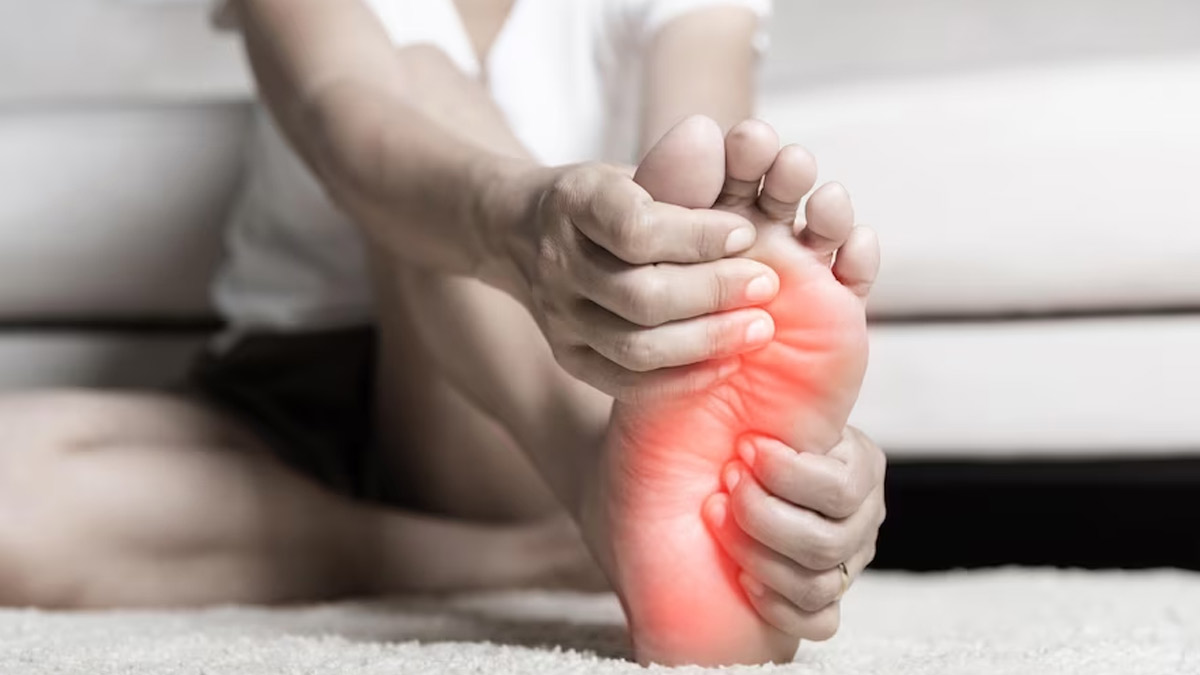
Heart diseases develop over time and are mostly silent, as they do not show any symptoms initially. Additionally, the signs that do appear can be mistaken for other, less harmful conditions, which can delay the diagnosis. Unfortunately, when heart-related conditions are left untreated, they can affect your body in various ways. This is particularly because heart disease is not just one type of ailment; rather, it encompasses various types, including coronary artery disease, heart failure, and arrhythmias, each of which may require specific treatments and lifestyle modifications.
Table of Content:-
One of the sneaky ways heart disease can impact the body is by affecting the lower extremities of the body, meaning the legs and the feet. We spoke to Dr Salil Shirodkar, Senior Consultant, Interventional Cardiology, Nanavati Max Super Speciality Hospital, Mumbai, to understand the connection.
Also Read: Is Your Heart In Good Shape? 5 Important Tests That Can Tell You
How Heart Disease Impacts The Lower Extremities

Heart disease can affect the legs and feet in many ways. But one of the most common causes is reduced blood flow caused by conditions like Peripheral Artery Disease (PAD), said Dr Shirodkar.
PAD occurs when the arteries supplying blood to the legs and feet become narrowed or blocked, leading to reduced blood flow and causing various complications in these areas, the doctor explained.
In 2019, over 11.3 crore people worldwide lived with PAD, with over one crore new cases and, sadly, nearly 74,000 deaths, according to a study published in the journal Frontiers in Cardiovascular Medicine.
While the number of people affected kept rising, the rates (adjusted for age) actually went down, the study said, sharing that more people had PAD, but the disease wasn't affecting everyone as severely.
What Causes Peripheral Artery Disease (PAD)?

PAD is primarily caused by the buildup of plaque in the arteries, which is called atherosclerosis, as per the US Centers for Disease Control and Prevention (CDC).
It can occur in any blood vessel, but is more common in the legs than the arms, the health body further shares.
Some of the factors that put one at risk of the condition include:
- Smoking
- High blood pressure
- Atherosclerosis
- Diabetes
- High cholesterol
- Age above 60 years
It is important to note that those who already suffer from PAD are at an increased risk of developing coronary artery disease and cerebrovascular disease, which could lead to a heart attack or stroke, the CDC warns.
Also Read: Did You Know That Air Pollution Can Trigger Heart Attacks? Expert Answers
Common Symptoms In Legs And Feet

Dr Shirodkar said, “One of the most common symptoms of PAD is claudication, causing leg pain during physical activity that typically subsides with rest. Additionally, decreased blood flow can lead to non-healing wounds or ulcers on the legs or feet, which are slow to heal and prone to infections.”
He added, “In severe cases, inadequate blood supply can cause tissue damage or gangrene in the legs or feet, potentially necessitating amputation if the tissue cannot be saved.”
According to the doctor, poor circulation can also manifest as coldness in the legs and feet, changes in skin colour or texture, and weakened or absent pulses when checked by healthcare providers.
Additionally, swelling in the feet, also called oedema, can also be a heart problem. To be more specific, it can be an outcome of heart failure, which occurs when the heart is unable to pump sufficient blood through the body, according to Medical News Today. Common signs include sudden puffiness in the feet, pain, difficulty walking, and having difficulty fitting into shoes.
Things To Remember
When it comes to maintaining your heart health, assessing your risk factors for heart disease is extremely crucial. These include high blood pressure, high cholesterol, diabetes, and obesity. It is also important to keep a check on your diet, your activity, and your stress levels. In severe cases and to prevent the risks associated with heart-related vascular complications, treatment may include medications and sometimes surgical interventions to improve blood flow in the legs and feet, Dr Shirodkar concluded.
Also watch this video
How we keep this article up to date:
We work with experts and keep a close eye on the latest in health and wellness. Whenever there is a new research or helpful information, we update our articles with accurate and useful advice.
Current Version